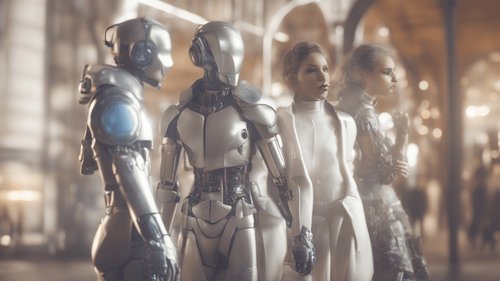
Introduction
In today's rapidly evolving technological landscape, the concept of chatbots talking to each other has garnered considerable attention. This article delves into the intriguing realm of chatbot interactions, uncovering the possibilities, complexities, and significance of these conversations.
Understanding Chatbot Conversations
What Are Chatbots?
Chatbots are sophisticated AI programs designed to engage in human-like conversations. These digital agents use natural language processing (NLP) algorithms to interpret and respond to user queries and commands.
Chatbot Communication Protocols
When chatbots engage in dialogue, they follow specific communication protocols, often relying on structured message formats and predefined responses. This enables seamless interaction between chatbot entities.
Challenges in Chatbot-to-Chatbot Communication
Enabling effective communication between chatbots introduces challenges such as context preservation, coherent dialogue flow, and mutual understanding of intent.
The Dynamics of Chatbot Interactions
Types of Chatbot Conversations
Chatbot interactions can range from simple exchanges to complex, multi-turn dialogues. They may involve information retrieval, task completion, entertainment, and more.
Benefits of Chatbot Collaborations
When chatbots converse, they can leverage each other's strengths to provide more accurate and comprehensive information to users. This collaborative approach enhances user satisfaction and overall chatbot performance.
Potential Use Cases for Chatbot Conversations
Industries like customer service, e-commerce, healthcare, and finance can harness the power of chatbot interactions to streamline processes, improve user experiences, and increase operational efficiency.
Technical Aspects of Chatbot Dialogues
Natural Language Processing (NLP) in Chatbot Interactions
NLP plays a pivotal role in enabling meaningful conversations between chatbots. It empowers them to understand user intent, context, and sentiment, leading to more contextually relevant responses.
Contextual Memory and Continuity
Chatbots must maintain context throughout a conversation, ensuring that subsequent responses remain coherent and relevant. This contextual memory enables fluid and human-like interactions.
Role of Machine Learning in Chatbot Conversations
Machine learning algorithms empower chatbots to learn from previous interactions and adapt their responses over time. This iterative learning process contributes to the improvement of dialogue quality.
Implications and Considerations
Ethical Considerations in Chatbot Interactions
As chatbots become more autonomous, ethical concerns surrounding biased responses, privacy, and accountability come to the forefront. Striking a balance between innovation and responsibility is crucial.
Security and Confidentiality
Chatbot conversations may involve sensitive information. Ensuring robust security measures, data encryption, and user authentication is imperative to protect user privacy.
User Experience and Personalization
Effective chatbot interactions require a focus on user experience. Tailoring responses to individual preferences and learning from user feedback enhances the overall engagement.
Future Prospects of Chatbot Conversations
Advancements in AI and NLP
As AI and NLP technologies continue to evolve, chatbots will likely exhibit even more human-like conversational abilities, blurring the lines between human and machine interactions.
Potential Disruption and Transformation
Industries that adopt advanced chatbot interactions may experience transformative changes in customer engagement, business operations, and service delivery.
FAQs about Chatbots Talking to Each Other
How Do Chatbots Learn to Communicate with Each Other?
Chatbots learn to communicate through extensive training on vast datasets, allowing them to understand language nuances and generate contextually appropriate responses.
Can Chatbots Develop Their Own Language?
While chatbots can develop unique shorthand or communication patterns, they generally adhere to predefined languages to ensure meaningful and comprehensible interactions.
Do Chatbots Always Collaborate, or Can They Compete?
Chatbots can both collaborate and compete, depending on their programmed objectives. Collaboration is often beneficial for enhancing user experience and problem-solving.
What Are Some Risks of Unmonitored Chatbot Conversations?
Unmonitored chatbot conversations can lead to misinformation, offensive content, or unintended consequences. Human oversight is crucial to prevent such risks.
How Will Chatbot Conversations Impact Job Roles?
Chatbot conversations may automate routine tasks, potentially impacting roles centered around basic customer interactions. However, they can also create new opportunities in AI development and maintenance.
Are There Regulations for Chatbot Interactions?
Regulations for chatbot interactions are still evolving. Ethical guidelines and data privacy laws may play a significant role in shaping the future of chatbot conversations.
Conclusion
The realm of chatbots talking to each other offers a glimpse into the possibilities of AI-driven communication. As technology advances, chatbot interactions hold the potential to reshape industries, redefine user experiences, and pave the way for more sophisticated human-machine collaborations. Embracing the opportunities while addressing the challenges will be key to harnessing the full potential of chatbot conversations in the years to come.